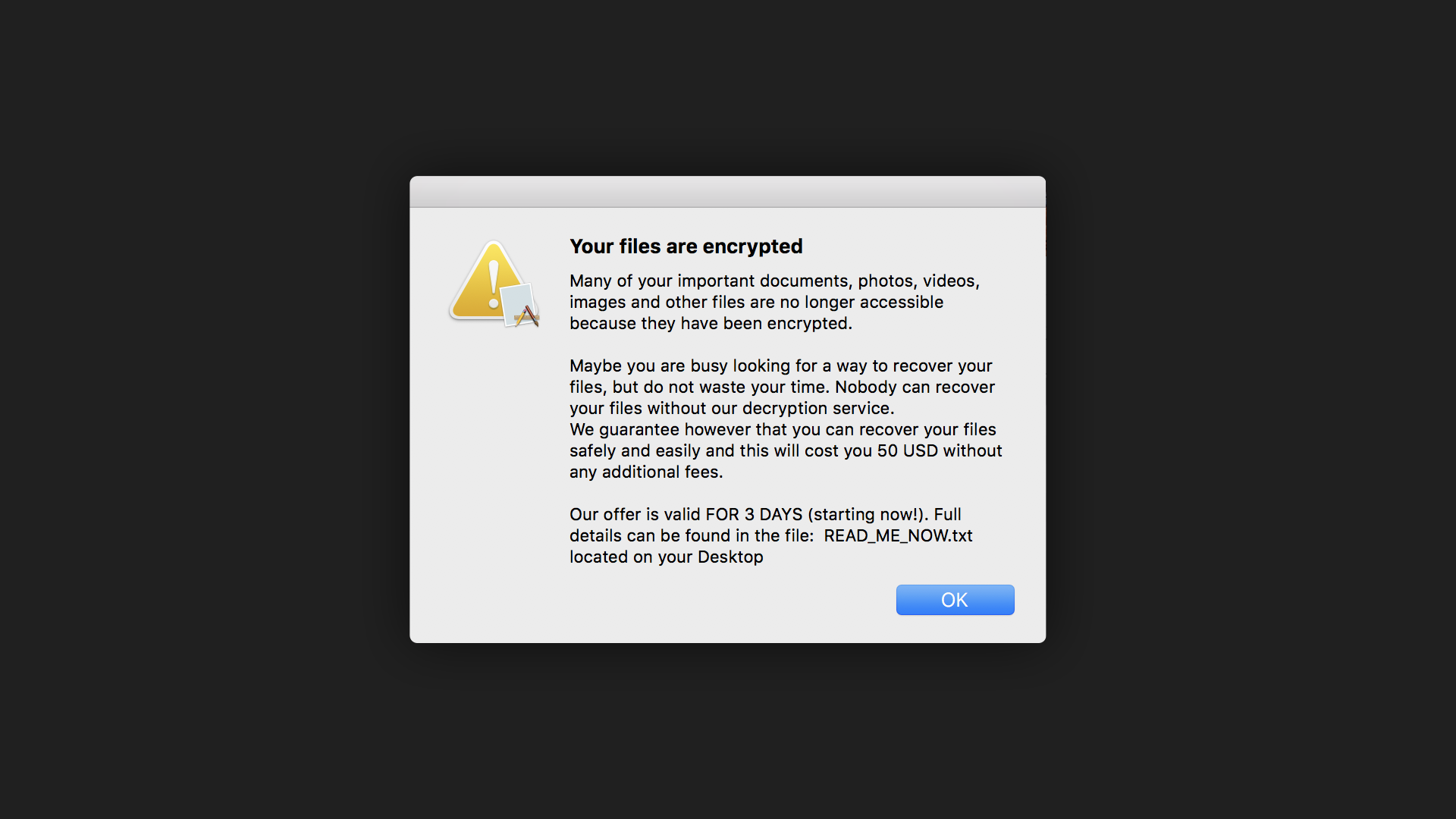
- #HOW TO DETECT RANSOMWARE ON MAC HOW TO#
- #HOW TO DETECT RANSOMWARE ON MAC SOFTWARE#
- #HOW TO DETECT RANSOMWARE ON MAC PASSWORD#
- #HOW TO DETECT RANSOMWARE ON MAC FREE#
Step 5: After a while, the restoration will be finished. Step 4: Here you should choose where do you want to restore files: in the original location or select another location by yourself. Step 3: In the display box, you just tick the files/folders you have selected and click Next. You can also choose a single file backup to restore. Then select the wanted image file and click Add folder to show it the list box. See in the location where you just created a backup, there are folders of which the attributes are Backup. Step 2: Browse folders to select a backup.

Next, in the Restore section, choose Restore my files. Then, find Backup and Restore (Windows 7) and click it. Step 1: Type Control Panel in the Search box to open it. If you have created Windows backup with the Backup and Restore (Windows 7) feature, you can also perform the ransomware recovery. In this way, you have finished a system restoration using Windows tool, and protect yourself from ransomware. Note that all data on the target location will be replaced with the data in the system image. Click Finish to start the restoration if you agree. Step 5: Finally, you can preview what will happen. Step 4: Now you see the re-image interface, where you can choose a system image version and choose additional restore options.
#HOW TO DETECT RANSOMWARE ON MAC PASSWORD#
Step 3: Then you need to choose an account and enter the password if it has to continue. There you need to click the Troubleshoot > Advanced Options > System Image Recovery. Step 2: Your computer will boot to the special recovery menu. Under the Advanced start-up part, click Restart now. Step 1: Press the Windows + I keys at the same time to open the Settings application.
#HOW TO DETECT RANSOMWARE ON MAC HOW TO#
Then How to Restore Windows from a System Image? For this method to work, your data and applications must not contain the ransomware you are currently infected with. If you have creates a system restore point, you can restore your system from the backup to perform the ransomware data recovery. Read More Solution 2: Perform a System Restore Let’s see how to recover the deleted data with this powerful tool. MiniTool Power Data Recovery provides you with a reliable and quick data recovery solution to recover the original data which is deleted by the ransomware.
#HOW TO DETECT RANSOMWARE ON MAC FREE#
Therefore, you can try the free version of MiniTool Power Data Recovery -the most effective solution for most data loss situations - to scan for deleted files. If you find that your system is infected by ransomware and data is deleted by ransomware and there is no backup available, you had better try the data recovery tool first.

Solution 1: Try MiniTool Power Data Recovery First If your computer is infected by ransomware, you can perform ransomware recovery to recover the deleted data. What Is PXJ Ransomware and How to Remove It?.Mercury Ransomware Encrypts Your Files? Do These Things Now!.Mobile device ransomware - It infects mobile phones through drive-by downloads or fake apps.
#HOW TO DETECT RANSOMWARE ON MAC SOFTWARE#

The following are other types of ransomware: Ransomware like WannaCry can replicate itself.Įncrypted ransomware or encryption software is by far the most common ransomware. However, some ransomware can spread without user interaction. It can also spread through websites or drive-by downloads to infect endpoints and penetrate the network. Ransomware is usually spread through spam, phishing emails. If you don’t have the decryption key, you are not allowed to access the files and folders. Ransomware attempts to extort money from victims by asking for money, usually in form of cryptocurrencies, in exchange for the decryption key. Ransomware is a type of malware that locks files and folders to prevent your access to them.


 0 kommentar(er)
0 kommentar(er)
